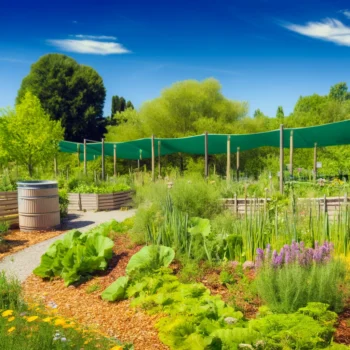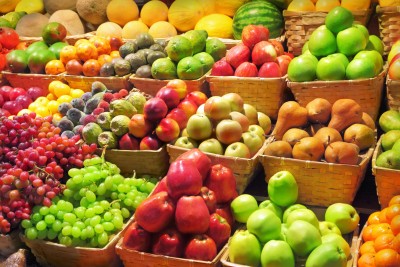By Oliva Wilson
Staff writer for Wake Up World
In sustainable living, closed-loop systems are increasingly recognized as the gold standard, and gardening is no exception. Surprisingly, despite its profound benefits, many gardeners have not prioritised establishing a closed-loop system in their gardening practices. This overlooks a critical opportunity: reducing reliance on external resources can significantly lessen our environmental impact while cultivating a flourishing garden.
What is Closed-Loop Gardening?
[pro_ad_display_adzone id=”110028″]
Closed-loop gardening is a self-sufficient gardening system with minimal external inputs. This method harnesses natural processes such as sunlight and rain, supplemented only by your own time and effort. A closed-loop garden functions in harmony with nature, utilizing internal resources for its own sustenance and regeneration.
Key Strategies for Implementing Closed-Loop Gardening
To initiate a closed-loop garden, consider these sustainable practices:
- Seed Saving and Propagation: Generate new plants from existing ones to maintain and expand your garden’s biodiversity.
- Natural Reproduction: Encourage plants that naturally spread or self-seed. These can include native species often dismissed as weeds.
- Organic Material Recycling: Utilize garden waste for mulching and composting to enrich the soil naturally.
- Nitrogen Fixation: Plant nitrogen-fixing species to enhance soil fertility without chemical fertilizers.
- Garden Construction: Use materials from your garden to create pathways, bed edging, and more.
- Water Management: Develop systems to capture and utilize rainwater efficiently, reducing dependence on municipal water supplies.
- Synergistic Planting: Design your garden layout to encourage beneficial interactions among plant species.
These strategies help establish a closed-loop system and promote a deeper understanding of ecological cycles in your garden.
Why You Should Aim for Closed-Loop Gardening
Sustainability at Its Core
Closed-loop gardening dramatically reduces the need to purchase garden supplies—from potting mixes to seeds—each carries environmental and economic costs. By fulfilling garden needs internally, you decrease the carbon footprint of transporting and producing garden inputs.
Benefits to Gardeners
Beyond environmental impact, closed-loop gardening offers substantial benefits for gardeners:
- Financial Savings: Reduce expenditure on garden inputs and maintenance.
- Less Labor: By working with natural cycles, the garden demands less intervention and upkeep, easing the gardening workload.
- Enhanced Garden Health: A closed-loop system promotes a more resilient and diverse ecosystem, which can lead to healthier plants and soil.
Closed-loop gardening is not just a gardening technique—it’s a transformative approach that aligns with permaculture and sustainable living principles. By adopting this method, gardeners can contribute to solving global environmental challenges while enjoying a prolific, low-maintenance garden that thrives in harmony with nature. Let’s turn our gardening practices around and make closed-loop systems a standard goal for a greener, more sustainable world.
Practical Guide: How to Start Your Closed-Loop Garden
Embarking on closed-loop gardening may seem daunting initially, but with a few practical steps, you can transform your garden into a sustainable ecosystem. Here’s a straightforward guide to help you get started:
Step 1: Assess Your Resources
Begin by evaluating what you already have in your garden. Identify existing plants that can contribute to a closed-loop system, such as nitrogen-fixers or natural mulchers. Look at your space to determine potential areas for rainwater collection systems or new planting beds.
Step 2: Plan Your Garden Layout
Design your garden with sustainability in mind. Group plants with similar water and sunlight needs together to reduce resource waste. Plan for biodiversity by mixing crops that benefit each other, which can help in pest control and improve soil health.
Step 3: Implement Composting
Set up a composting system to recycle kitchen scraps and garden waste. This will reduce landfill waste and create rich soil that can significantly boost your garden’s health without external inputs.
Step 4: Harvest and Save Seeds
Learn to collect and store seeds from your garden’s plants. Seed saving is crucial for perpetuating your garden year after year without buying new seeds. It also helps cultivate varieties well-suited to your specific garden environment.
Step 5: Use Natural Mulches
Utilize organic material like leaves, straw, or grass clippings from your garden as mulch. This will help retain soil moisture, suppress weeds, and add nutrients to the soil as they decompose.
Step 6: Install a Rainwater Harvesting System
Collect rainwater through gutters and storage barrels. This water can be used for irrigation, reducing your reliance on municipal water systems and lowering your water bill.
Step 7: Monitor and Adjust
Regularly observe how your garden performs and make adjustments as needed. Note what works and what doesn’t, and be prepared to tweak your system to suit your specific conditions and climate better.
Step 8: Educate Yourself and Community
Continually educate yourself about sustainable practices and closed-loop gardening. Share your knowledge and experiences with the community to promote wider adoption of these methods.
Following these steps can create a productive and beautiful garden crucial to building a sustainable future. Whether you’re a novice gardener or a seasoned green thumb, these practices will enhance your gardening journey towards a more eco-friendly and self-sustaining approach.
Book Recommendations:
-
- The Organic Gardener’s Handbook of Natural Insect and Disease Control by Barbara W. Ellis and Fern Marshall Bradley
- Rodale’s Basic Organic Gardening: A Beginner’s Guide to Starting a Healthy Garden by Deborah L. Martin
- Gaia’s Garden: A Guide to Home-Scale Permaculture by Toby Hemenway
About the Author
Olivia Wilson is a passionate writer with a green thumb and a heart for healthy living. Through her articles, she aims to inspire others to cultivate vibrant gardens and nourish their bodies and souls through the power of nature. When she’s not tending to her garden or experimenting with new recipes in the kitchen, she can be found exploring local farmers’ markets or enjoying a peaceful hike in the great outdoors.
[pro_ad_display_adzone id=”110027″]







